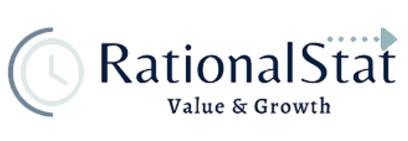
Introduction
The global cloth market stands as a testament to the dynamic nature of the fashion industry, reflecting evolving consumer preferences, sustainable practices, and technological advancements. In this comprehensive overview, we delve into the intricate threads of the global cloth market, unraveling its key trends, challenges, and opportunities.
Market Overview
As per RationalStat analysis, the global cloth market is expected to grow at a compound annual growth rate (CAGR) of 5.8% from 2023 to 2028, reaching a value of US$ 2.5 trillion by 2028. The market is driven by fashion-conscious consumers, innovative textile technologies, and sustainable initiatives. With the rise of e-commerce platforms, the market has transcended geographical boundaries, connecting retailers and buyers worldwide.
Driving Factors
The growth of the market is being driven by several factors, including:
- Increasing urbanization and disposable incomes in developing countries
- Growing demand for sustainable and ethical fashion
- The rise of e-commerce and direct-to-consumer brands
Trends Shaping the Industry
- Sustainable Fashion: The increasing awareness of environmental issues has led to a surge in demand for eco-friendly fabrics and ethical production practices. Companies embracing sustainability are gaining a competitive edge.
- Digital Transformation: Technology has revolutionized the cloth market with online customization tools, virtual try-ons, and AI-driven fashion suggestions, enhancing the customer shopping experience.
- Fast Fashion vs. Slow Fashion: The debate between fast fashion, emphasizing rapid production and low costs, and slow fashion, promoting quality, durability, and ethical production, continues to shape consumer choices.
Challenges Faced by the Industry
- Supply Chain Disruptions: The cloth market faced significant challenges due to the COVID-19 pandemic, highlighting the vulnerability of global supply chains.
- Labor Issues: Ensuring fair wages and safe working conditions for laborers, especially in developing countries, remains a critical challenge for the industry.
- Counterfeiting and Intellectual Property: Protecting intellectual property rights and combating counterfeit products are ongoing battles for cloth manufacturers and designers.
Opportunities on the Horizon
- E-Commerce Expansion: The continuous growth of online retail provides opportunities for small businesses and artisans to reach a global audience, reducing the need for extensive physical infrastructure.
- Innovation in Textiles: Research and development in smart textiles, sustainable fabrics, and 3D printing are opening new avenues for creativity and functionality in the cloth market.
- Global Collaboration: Collaborative efforts between governments, organizations, and businesses can facilitate the implementation of sustainable practices, creating a more responsible industry.
Largest Cloth Market in the World
- The Asia Pacific region is the largest cloth market, accounting for over 50% of global sales. The region has several major clothing manufacturers and exporters, such as China, Bangladesh, and Vietnam.
- The US is the second-largest market for cloth, followed by the European Union. A high demand for high-end and budget-friendly fashion characterizes these markets.
- The largest cloth market in Asia is China. China is the world's largest textile-producing and exporting country, with a textile industry accounting for over 35% of global textile sales.
- The Chinese textile industry is concentrated in several key regions, including Jiangsu, Zhejiang, Guangdong, and Shandong Provinces. These regions are home to many textile mills, garment factories, and other businesses supporting the textile industry.
Several factors contribute to China's dominance in the global textile market. These include:
- Low-cost production: China has a large and relatively low-cost labor force, which gives it a competitive advantage in producing textile goods.
- Abundant raw materials: China significantly produces cotton, wool, and other textile raw materials. This gives Chinese textile companies easy access to high-quality raw materials at competitive prices.
- Government support: The Chinese government has recently made significant investments in the textile industry. This has helped to improve the quality of Chinese textile products and make them more competitive in the global market.
Sustainability Set the future Roadmap for the Cloth and Fabric Market
The global cloth market is a multifaceted tapestry of innovation, challenges, and opportunities. Navigating this landscape requires adaptability, creativity, and a commitment to sustainable practices. As consumers become more conscious of their choices, the industry must respond with integrity and ingenuity, ensuring a harmonious balance between fashion, ethics, and the environment. The cloth market can continue to weave a vibrant and sustainable future by embracing these challenges and opportunities.
To get more insights on the Global Smart Clothing Market, take advantage of the market research report by RationalStat that can shape your decision into a well-informed decision. Request a free sample report.

Ujjwal Parwal
Co-founder and Director at RationalStat
Ujjwal is a thought leader and recognized expert in the market research and consulting field. He is the co-founder at RationalStat, a leading global market research & procurement intelligence firm with 10+ years of industry expertise.







You must be logged in to post a comment.